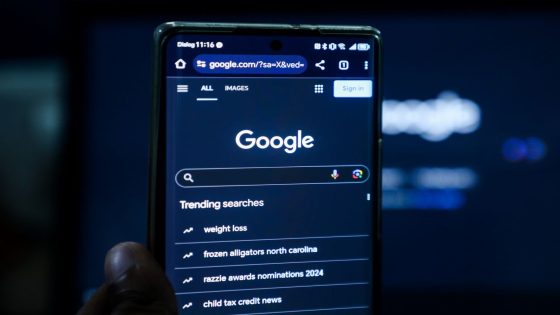Google Photos is introducing AI watermarks to photos edited with its Magic Editor. This new feature, rolling out in early February 2025, aims to help users quickly identify images altered using generative AI. Are you curious about how this technology will impact your photo-sharing experience?
- Google Photos adds SynthID watermarks for edits
- SynthID identifies AI-generated or altered content
- Watermarking aims to address content manipulation
- Detection tool identifies SynthID watermarks
- Small edits may evade SynthID detection
- Experts suggest varied approaches for authentication
How Google’s New AI Watermarks Enhance Photo Authenticity for Users
Have you ever wondered if a photo has been manipulated? Google’s new watermarking feature aims to address this concern. By embedding digital tags into edited images, users can better discern the authenticity of their photos. This is especially important in an age where misinformation can spread rapidly online.
Understanding Google’s SynthID Watermarking System for Edited Photos
Google’s SynthID watermarking system is designed to provide transparency in digital content. Here’s how it works:
- Watermarks are embedded directly into images edited with the Magic Editor.
- Users can identify AI alterations using Google’s dedicated detection tools.
- The technology aims to combat misinformation by clearly marking edited content.
- Similar systems are being developed by other companies, enhancing industry standards.
What Makes SynthID Different from Other Watermarking Technologies?
SynthID stands out because it does not visibly alter the images it tags. Unlike traditional watermarks, which can be seen, SynthID is embedded in the metadata. This allows for a seamless user experience while still providing a layer of security. But how effective is it at detecting all types of edits?
Challenges in Authenticating AI-Generated Content
While watermarking is a step forward, experts warn that it may not be enough on its own. The effectiveness of SynthID could vary based on the complexity of edits. Some minor changes might go undetected, raising questions about its reliability. What other methods could be combined with watermarking to ensure authenticity?
The Future of Digital Content Verification in the U.S.
As digital content continues to evolve, the need for reliable verification methods becomes crucial. Google’s efforts with SynthID represent just one approach in a broader movement towards transparency. Will these advancements lead to a safer online environment for users in the U.S.?
In conclusion, Google’s introduction of AI watermarks in photos edited by Magic Editor is a significant step towards enhancing digital content authenticity. As technology progresses, staying informed about these changes will empower users to navigate the digital landscape more confidently.































